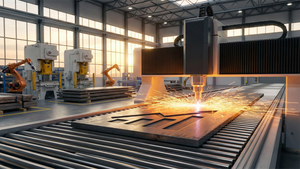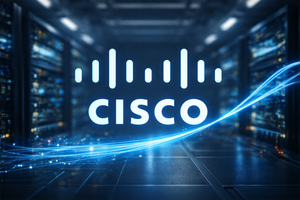
The venerable semiconductor giant, Intel (NASDAQ: INTC), has been navigating a period of profound turbulence, marked by a significant and prolonged stock decline that has sent shockwaves across the financial markets. This sustained underperformance, evident throughout late 2024 and extending into Q3 2025, has not only eroded investor confidence in the company but also cast a shadow over the broader technology sector, influencing stock futures and highlighting critical shifts in the competitive landscape of chip manufacturing and design. The challenges faced by Intel are indicative of deeper structural changes within the industry, prompting a re-evaluation of long-held market dynamics and investment strategies.
A Protracted Struggle: Unpacking Intel's Recent Underperformance
Intel's recent woes are a culmination of several intertwined factors, primarily stemming from persistent manufacturing missteps, an increasingly aggressive competitive environment, and strategic shifts that have yet to fully materialize. The company's stock endured a brutal 2024, shedding over 60% of its value, with the decline continuing into 2025. By early June 2025, Intel's shares were down 64% year-over-year, punctuated by a 5.7% drop in the week leading up to May 27, 2025.
The financial reports painted a stark picture of the company's struggles. Q3 2024 saw Intel report a significant earnings per share (EPS) miss at -$0.46, despite revenue of $13.3 billion. The full year 2024 closed with a staggering net loss of $11.6 billion and a 2% year-over-year revenue decrease to $53.1 billion, with its crucial foundry business alone burning over $13.4 billion. The trend continued into 2025: Q1 2025 brought a loss per share of $0.13 and a gross margin decline to 39.2%. The pressure intensified on July 25, 2025, when a disappointing Q2 2025 earnings report saw shares drop over 6%, revealing an adjusted net loss of $441 million, or $0.10 per share, against analyst expectations. Looking ahead, Intel's Q3 2025 forecast projected revenue between $12.6 billion and $13.6 billion, with an anticipated GAAP EPS of $(0.24).
At the core of Intel's underperformance lies its once-vaunted integrated device manufacturer (IDM) model. The company has struggled significantly to modernize its manufacturing processes, falling behind advanced pure-play foundries like Taiwan Semiconductor Manufacturing Co. (NYSE: TSM). This manufacturing lag has led to delays in developing cutting-edge chip nodes, impacting product competitiveness. Intel Foundry, the company's dedicated manufacturing arm, has been a major drain, incurring substantial operating losses—$7 billion in 2023 and an additional $5.8 billion in Q3 2024. While the U.S. CHIPS and Science Act provided significant funding, heavy investments in new fabrication facilities in Arizona and Ohio, and previously planned facilities in Germany and Poland (which were later delayed and then canceled or scaled back in July 2025), have temporarily reduced profitability and contributed to nearly $16 billion in cash flow burned in 2024. The company also recognized $1.9 billion in restructuring charges and $800 million in impairment charges in Q2 2025 as part of its operational overhaul.
Adding to Intel's woes is the relentless competition across all its core markets. In the CPU arena, Advanced Micro Devices (NASDAQ: AMD) continues to chip away at Intel's market share in both desktop and server segments. The burgeoning GPU and AI chip markets are dominated by Nvidia (NASDAQ: NVDA), where Intel has struggled to establish a significant foothold, with its discrete GPU market share slipping to under 1% by September 2024. Furthermore, in the PC and mobile sectors, Apple's (NASDAQ: AAPL) highly efficient M-series chips and Qualcomm's (NASDAQ: QCOM) powerful Snapdragon X Elite processors have set new benchmarks, further challenging Intel's long-standing dominance in the PC space. This intense pressure has seen Intel's client and server CPU market share decline significantly from 80% a decade ago to approximately 61.6% by February 2025. The company also experienced leadership instability, with CEO Pat Gelsinger's ousting in December 2024 and subsequent leadership changes, culminating in Lip-Bu Tan taking the CEO role in March 2025. This period of uncertainty, coupled with macroeconomic headwinds and U.S.-China trade tensions, has compounded Intel's challenges.
Shifting Sands: Winners and Losers in the Semiconductor Race
Intel's decline creates a clear hierarchy of beneficiaries and those indirectly affected within the tech ecosystem. The most immediate winners are its direct competitors, who have capitalized on Intel's manufacturing delays and strategic missteps to gain market share and solidify their technological leads.
Advanced Micro Devices (NASDAQ: AMD) stands out as a primary beneficiary. AMD has consistently delivered competitive CPUs for both consumer and enterprise markets, leveraging Taiwan Semiconductor Manufacturing Co.'s (NYSE: TSM) advanced fabrication processes. As Intel grapples with its foundry issues, AMD has been able to offer more performance-per-watt and increasingly competitive price points, particularly in the high-margin data center segment, leading to increased revenue and market valuation. Nvidia (NASDAQ: NVDA), already a titan in the GPU and AI chip markets, further extends its lead as Intel struggles to develop a compelling alternative in these high-growth areas. Nvidia's dominance in AI accelerators makes it indispensable for cloud providers and tech companies, ensuring continued revenue growth and a premium valuation.
In the PC and mobile sectors, Apple (NASDAQ: AAPL) and Qualcomm (NASDAQ: QCOM) are also gaining ground. Apple's successful transition to its in-house M-series chips, based on Arm architecture, has demonstrated the viability of moving away from Intel's x86 architecture, inspiring other PC makers. Qualcomm's Snapdragon X Elite processors, also Arm-based, are poised to challenge Intel's stronghold in Windows laptops, offering superior battery life and performance. Taiwan Semiconductor Manufacturing Co. (NYSE: TSM), as the world's leading pure-play foundry, benefits indirectly from Intel's manufacturing woes. As more companies, including Intel's competitors, rely on TSMC for advanced chip production, TSMC's order books swell, reinforcing its critical role in the global semiconductor supply chain. Conversely, companies heavily reliant on Intel's processors for their products, such as certain PC manufacturers, may face supply chain uncertainties or be forced to diversify their component sourcing, potentially incurring additional costs or design complexities in the short term.
Broader Implications: A Bellwether for the Tech Sector
Intel's protracted struggles are more than just a company-specific issue; they serve as a significant bellwether for the broader technology sector and underscore several critical industry trends. The challenges faced by Intel highlight the immense capital intensity and technological complexity involved in leading-edge semiconductor manufacturing. The traditional IDM model, where one company designs and manufactures its own chips, is proving increasingly difficult to sustain at the forefront of innovation. This trend reinforces the rise of the fabless model, where companies focus solely on design and outsource manufacturing to specialized foundries like TSMC, demonstrating greater agility and efficiency.
The event also emphasizes the escalating importance of specialized chip architectures and AI-driven processing. While Intel has historically dominated general-purpose computing, the industry is rapidly shifting towards accelerated computing and AI-specific hardware, areas where Nvidia (NASDAQ: NVDA) and even new entrants are excelling. Intel's delayed entry and struggles in these segments have allowed competitors to establish formidable leads, signaling that future market leadership will hinge on specialized innovation rather than broad-based CPU dominance alone. This shift has significant ripple effects on the entire supply chain, from material suppliers to equipment manufacturers, who must adapt to the changing demands of chip design and production.
Regulatory and policy implications are also at play. The U.S. CHIPS and Science Act, designed to bolster domestic semiconductor manufacturing, has channeled significant funds to Intel. However, Intel's continued challenges despite this support raise questions about the efficacy of such industrial policies and the sheer scale of investment required to compete with established Asian foundries. It also highlights the geopolitical competition for technological supremacy, with nations vying for control over critical semiconductor supply chains. Historically, dominant tech companies have faced periods of intense competition and technological disruption; Intel's current situation draws parallels to the challenges faced by IBM in the 1990s or Nokia in the 2000s, where an inability to adapt swiftly to new paradigms led to a loss of market leadership. This underscores the brutal nature of technological evolution, where even giants can stumble if they fail to innovate at pace.
The Road Ahead: Navigating a New Semiconductor Landscape
The path forward for Intel is fraught with both immense challenges and potential opportunities, demanding strategic pivots and significant adaptation. In the short term, Intel's immediate focus will be on stabilizing its manufacturing operations and stemming the bleeding from its foundry business. The success of its 18A manufacturing process, expected to reach high-volume production in the second half of 2025, is critical. Any further delays or performance issues with 18A could exacerbate its problems and further erode investor confidence. The company's aggressive workforce reduction plan, aiming for a 20% cut by the end of 2025, signals a painful but necessary effort to streamline operations and improve profitability.
Long-term possibilities for Intel hinge on its ability to diversify its revenue streams and regain technological leadership in key growth areas. This includes making significant inroads into the AI chip market, where it currently lags behind Nvidia (NASDAQ: NVDA), and strengthening its position in specialized computing solutions for data centers and edge devices. Strategic partnerships and acquisitions could also play a role in accelerating its capabilities in areas like advanced packaging or software optimization for its hardware. Market opportunities may emerge if Intel can successfully execute its turnaround, particularly if it can leverage its IDM 2.0 strategy to offer differentiated foundry services that attract external customers. However, the capital-intensive nature of this shift, combined with intense competition, presents formidable challenges.
Potential scenarios range from a successful, albeit slow, recovery where Intel reclaims some of its lost market share, particularly if 18A proves to be a competitive node, to a continued decline where it becomes a niche player, focusing on specific segments rather than broad market dominance. Investors should watch closely for consistent improvements in gross margins, positive cash flow from operations, and tangible signs of design wins for its next-generation products. The ability of the new CEO, Lip-Bu Tan, to instill confidence and execute this complex turnaround plan will be paramount.
A Critical Juncture: Intel's Enduring Impact
Intel's recent decline represents a critical juncture not only for the company itself but for the entire semiconductor industry and the broader financial markets. The key takeaway is that technological leadership in the chip sector is fiercely contested and highly dynamic, demanding continuous innovation, flawless execution, and immense capital investment. Intel's struggles underscore the perils of manufacturing delays and the rapid erosion of market share when competitive alternatives emerge.
Moving forward, the market will be closely watching for definitive signs of Intel's turnaround strategy taking hold. This includes consistent execution on its manufacturing roadmap, particularly with the 18A process, and tangible evidence of regaining competitiveness in high-growth segments like AI and data center solutions. The performance of its competitors, such as Advanced Micro Devices (NASDAQ: AMD) and Nvidia (NASDAQ: NVDA), will continue to serve as a benchmark against which Intel's progress is measured. The long-term significance of this period will be in how it reshapes the global semiconductor landscape, potentially ushering in an era where specialized chip designers and pure-play foundries hold even greater sway. Investors should monitor Intel's quarterly earnings reports for improvements in profitability and gross margins, as well as announcements regarding new product launches and customer adoption. The ability of Intel to adapt, innovate, and execute will determine its lasting impact on the market in the coming months and years.
This content is intended for informational purposes only and is not financial advice






